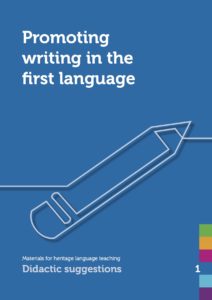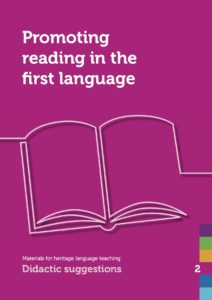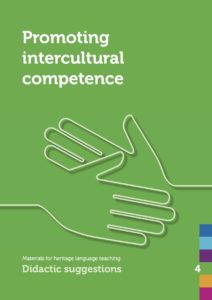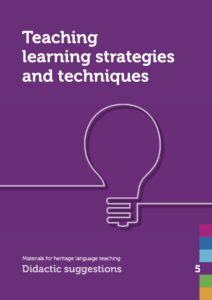The present volume is closely related to the didactic publications 1 and 2 of the series “Materials for heritage language teaching”. Whereas volumes 1 and 2 comprise suggestions for teaching writing and reading in the first language, the present volume is devoted to the vast area of orality. This includes sub-aspects of listening/listening comprehension and speaking, as shown in the overview. Contrary to the areas of reading and writing, this is not a matter of cultural techniques which have to be mediated in school from the gound up, but rather an extension and building of competencies that are related to daily life, which almost all children have acquired in their pre-school days. It is the task of the school to further develop these competencies to the extent that they are available and functional for increasingly more challenging contexts. In HLT this occurs with a focus on the first language, particularly its standard variant. That productive relationships can be established with the school language has been shown is chapter 2d.
The teaching proposals and didactic suggestions, designed to subsequently support HLT instructors in their important work to promote oral competence, have been divided in the following areas (which fundamentally comprise the productive as well as the receptive dimension, e. g., speaking and listening):
- Accoustical training; suggestions for creative language use
- To conduct oneself adequately in conversations – in pairs and in groups
- Narrating and playful interpreting of experiences and stories
- Presenting and reciting
A particulary broad space with 13 teaching proposals is devoted to Part II: (“To conduct oneself adequately in conversations – in pairs and in groups”). This is no accident: the skills and the competencies that are discussed here constitute essentially the entire foundation of communication and require particularly careful training.
The 32 teaching proposals are structured around a center of easily comprehensible presentations of the proposed procedure. They are preceded by partial references to supplement the formulation of goals and offer further background information. The rubrics “variants” and “comments” at the end of many teaching proposals include methodological alternatives as well as references to didactic-methodological detail aspects.
There are references to various aspects and exercises in the other volumes of the series “didactic suggestions” as well. In light of the importance of oral competence for the writing-related themes, this is not surprising. We refer especially to the following publications and chapters:
  |
Workbook 1 Promoting writing in the first language:See among others,the suggestions for oral preliminary exercises, etc. Practice section: chapters 1, 2, 7.4, 14, 18 etc. |
  |
Workbook 2 Promoting reading in the first language:See particularly the chapters dealing with reading out loud: 1, 10, 11 and 16 in the Practice section; |
  |
Workbook 4 Promoting intercultural competences:The majority of the teaching suggestions comprise important oral aspects (clarifying discussions, objective discussions, etc.); |
  |
Workbook 5 Mediation of learning strategies and techniques:The oral aspects here mainly concern the exchanges of experiences with various learning strategies. |
Lastly, a special feature should be mentioned that distinguishes the current volume from the others of the series. Three young teachers have contributed substantially to this work (Livia Huber, Annina Ruder, Flavio Ruffo), having dedicated their bachelor work with dedication and much energy to the topic “Promotion of orality in HLT”. Together with the project leader and the responsible editors on the part of HLT (Dragana Dimitrijević and Gordana Nikolić), a team emerged that was as innovative from its composition as it was productive from its functional operation.
As important sources, among many others, the following language teaching materials were consulted: “Sprachfenster”, “Sprachland”, “Sprachwelt Deutsch”, “Die Sprachstarken” and “Pipapo”. The relationship to these teaching materials ensures language didactic actuality and supports the cross-linking of HLT and mainstream classroom education.






